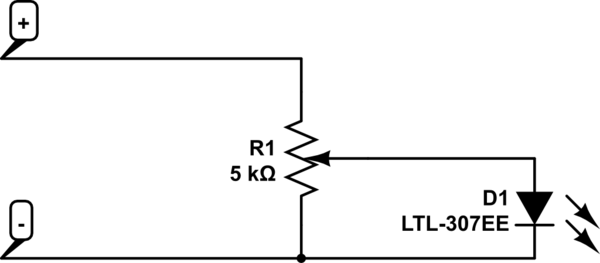I just built an HTPC. It's got a bright white power-on indicator LED that is in fact needlessly bright and, which is worse, blinks when the pc is in suspend mode. I want it to be less eye-catching.
- I suppose I can wire a resistor in front of the LED to dim it, but I've no idea how to select the proper value.
(and/or)
- Can I wire a capacitor in front of the LED to make it's "very binary" blinking into a somewhat smoother wave pattern, sort of pulsating? I really don't care about the specific wave form, I just want it to draw less attention (making it glow constantly, but dimmer, in suspend than in power-on would be just fine, if that's a simpler thing to do).
I've no idea about the ratings of the components involved. I'm sure the LED is being driven at 5V (I can check), and I suppose it draws somewhere between 20 and 200 mA.
Can you help a feller out with some component choices based on such poor specs?
Update: I have soldered together a 2200uF capacitor and two 100k potentionmeters -- see photos here. I have tried to recreate Spehro Pefhany's diagram (dead bug style, it's gloriously hideous) and I can report a 50% success: the dimming works nicely, but the blinking seems to be completely disabled -- it's always on (at whatever brightness I choose) and I can't detect even a hint of variance regardless of how I adjust the 2nd pot.
Have I (despite triple-checking) put it together wrongly? What should I change to restore at least some blinking?




